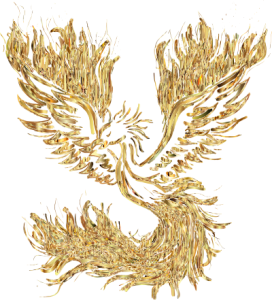Consciousness is ineffable and difficult to picture or imagine, yet we tend to live
our lives within the parameters of what we believe consciousness to be. Anomalous
phenomena occur at the intersection of normal waking consciousness and the vast
unconscious. Paranormal p (a/k/a anomalous) phenomena command our attention
because their incongruity and unexpectedness jerk us out of our complacency. They
break through the barrier between what we consider to be “normal” and the unknown that lurks just beyond the scope of our sensory cognition. Encounters with ghosts, spirits, UFOs or even psi experiences cause us to question the validity of our beliefs about consciousness and the true nature of the material world around us.
Science itself has always been motivated to observe anomalies. These
irregularities could lead to what Thomas Kuhn referred to as scientific revolutions
(Kuhn, 1996). Such revolutions progress as follows:
-
- A dominant paradigm of belief governs perception of a phenomenon, and what constitutes “truth.”
- All questions are answered within the parameters of these paradigmatic beliefs.
- A phenomenon is observed that cannot be satisfactorily explained by the dominant paradigm.
- The anomaly causes questions to arise that cannot be answered from within the parameters of the dominant paradigmatic beliefs.
- Study of the anomalous phenomenon generates deeper, expanded research resulting in new answers that supersede the previous paradigm.
- These new insights and information lead to the creation of a new dominant paradigm. This is the scientific revolution that results in what Kuhn referred to as a “paradigm shift (DeWitt, 2010; Kuhn, 1996).
A good example of such a scientific revolution and subsequent paradigm shift is how the observed seemingly anomalous periodic retrograde movement of Mars inspired the inquiry that ultimately led to the overthrow of the Ptolemaic geocentric model of astronomy and replaced it with a heliocentric model of the solar system (DeWitt, 2010).
Verifiable reports of anomalous phenomena could well be the inspiration behind
the next scientific revolution because they represent an entire genre of observations and experiences that cannot be explained by the current dominant paradigm, which is based in Newtonian physics and positivism. The current paradigm and its approved methods of inquiry fail to explain or account for so-called paranormal/anomalous phenomena. Parapsychology developed specifically to determine the viability of anomalous phenomena (particularly psi) by imposing criteria and using methods approved by the dominant positivist paradigm. With some exceptions (e.g. ESP, distance viewing, and telekinesis) which are amenable to experimentation within controlled environments, most paranormal events are well outside the boundaries of the accepted methods sanctioned for their serious study. Reported accounts of anomalous phenomena by non-scientists are usually deemed to be unreliable and dismissed as spurious “anecdotal evidence” by those in academic and scientific authority. Unfortunately anecdotal evidence is the primary source of most paranormal observations.
This leaves us with a potentially paradigm changing assortment of observable
anomalies that are not being recognized because they cannot be studied within the
existing parameters of the current paradigm of belief and responsible inquiry.
References:
Bouse, K. (2022). Finding the phoenix: Seven tools for transformative self-discovery. Bloomington, IN: Balboa Press.
DeWitt, R. (2010). Worldview: An introduction to the history and philosophy of
science. (2nd ed.) Chichester, UK: Wiley-Blackwell.
Kuhn, T. (1996). The structure of scientific revolutions. (3rd ed.) Chicago, IL: University of Chicago Press.

